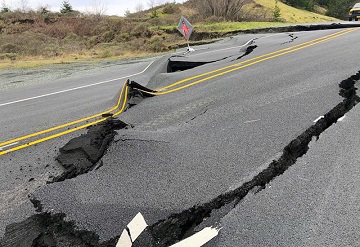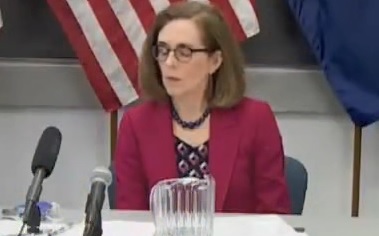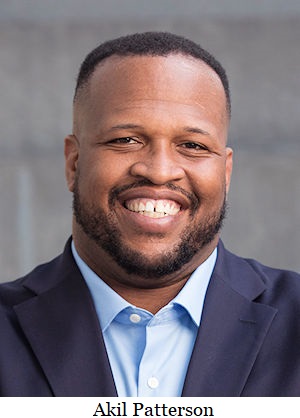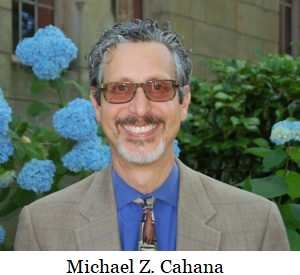
On this day, August 27, 2019, jet-car speed racer 30-year-old Jessi Combs, known by fans as the "fastest woman on four wheels," died in a crash in the Alvord Desert in Southeastern Oregon while trying to break a speed record.
 Post an Event
Post an Event
| Benton County Republicans’ Private Fundraising Event, “Bent-on Boots and Bling” with Trey Taylor |
| Friday, September 5, 2025 at 5:00 pm |
| Featuring Trey Taylor
Music Private Event
Friday, September 5, 2025 5:00-5:30 pm VIP Reception
5:30-8:00 pm Heavy Appetizers,
Auction, Concert
Red: $750 VIP Reception
Front Row Table Sponsor
White: $500 Table Sponsor
Blue: $50 per person
Limited Seating. Get Yours Now!!!
Support Local
Dress up: Bling, Cowboy, Patriotic Benton County Republican
FUNDRAISER
www.BentonGOP.org
Get your tickets today at:
https://www.bentongop.org/event-details/benton-county-republicans-fundraiser/form
About Trey:
Trey is the youngest African American Man in Country Music History. The Denver Post wrote
"It's impossible to miss his enthusiasm. With a fondness for cowboy boots, gaudy colors and dazzling jewelry, Trey Taylor could stand toe to toe with any of the Pop, Country or even Rap
contemporaries of his generation.“ |
| Trysting Tree Golf Club, 34028 NE Electric Rd., Corvallis |
3,114 marijuana plants destroyed
On July 27, 2022, the Oregon State Police’s Southwest Region Drug Enforcement Section team served an illegal marijuana search warrant in Grants Pass, Josephine County.
As a result, 3,114 illegal marijuana plants contained in five large greenhouses were seized, and ultimately destroyed. Three individuals were detained at the scene; one adult male and two juveniles, all of whom have permanent addresses in New York.
Seized during the investigation was one semi-automatic firearm with no serial number.
Additionally, the property is subject to multiple code violations through Josephine County Code Enforcement for human waste, unpermitted structures (greenhouses), and dangerous excavation.
Josephine County say they will move forward with enforcement action against the property owner which could result in the property's closure for one calendar year (illegal drug cultivation) and possible civil forfeiture.
A D V E R T I S E M E N T

A D V E R T I S E M E N T
This was after Jackson County Sheriffs and Medford Police
busted a black-market marijuana grow seizing approximately 2,748 illegal cannabis plants in seven greenhouses, and 1,000 pounds of processed black-market marijuana. Seven firearms were seized, one having no serial number.
It seems that illegal growers have not been scared out of the state after the 2021 concentration on raids. The
December Special Session passed SB 893 and SB 5561 to provide more financial assistance to local law enforcement agencies to address the problem of illegal cannabis.
In 2021, Police in four Southern counties raided illegal marijuana grows uncovering 1,793,029 marijuana plants and 988,768 pounds of processed marijuana with a black market value estimated at $2.78 billion. Compare this with nearly $1.2 billion legally sold marijuana in shops for the entire state in 2021.
Police believe the 2021 busts were only a fraction of the illegal marijuana grows across Southern Oregon. These busts also included confiscating at least 315 guns in Jackson and Josephine counties. In Jackson County, sheriffs found enough fentanyl to kill 16,000 people. Fentanyl is being added to drugs and pain killers. Sheriffs also discovered 134 pounds of butane honey oil, a substance extracted from cannabis through a highly volatile process that started numerous fires in 2021.
The investigation is more difficult because the criminal organizations that are growing illegally are not selling it locally. Most, if not all, are transporting the marijuana to various locations back east where they get a higher profit margin, which makes them dedicated, hardened folks, according to the Douglas County Sheriff’s Office and Mail Tribune reporter Vickie Aldous.
Counties report that investigations are open and ongoing with detectives working additional leads.
--Donna Bleiler| Post Date: 2022-07-31 06:57:54 | Last Update: 2022-07-31 07:23:14 |
Air quality violations spanning 10 years
The Oregon Department of Environmental Quality under the direction of Richard Whitman has settled the largest fine in agency history on Wednesday with Herbert Malarkey Roofing Co. in north Portland for air quality violations spanning 10 years. According to DEQ, this settlement helps ensure compliance and secure tangible environmental benefits for the community.
The signed settlement agreement, officially called a
Mutual Agreement and Final Order, lays out corrective actions to support both short- and long-term environmental compliance. The agreement requires Malarkey to submit an Operation, Maintenance and Monitoring Plan for pollution controls that were installed in 2020 within 45 days to DEQ for approval. In addition, Malarkey must report to DEQ monthly to confirm the pollution controls are operating effectively. Both the plan and the monthly reporting requirements will be rolled into Malarkey's updated air quality permit.
Additionally, the agreement directs Malarkey to consider paying up to $1.16 million of the final $1.45 million penalty towards DEQ-approved projects -- known as supplemental environmental projects -- that provide air quality benefits to the surrounding community. The final penalty was reduced from $2.1 million after Malarkey demonstrated fewer avoided costs from the violation.
A D V E R T I S E M E N T

A D V E R T I S E M E N T
"Supplemental environmental projects are a critical remedy for the communities harmed by environmental violations," said Kieran O'Donnell, DEQ Office of Compliance and Enforcement Manager. "This agreement puts Malarkey on track for compliance and gives the company the opportunity to engage with the surrounding community to rectify the violations."
If the company is not able to identify projects that meet DEQ requirements, it must pay the remaining 1.16 million penalty to the State.
--Staff Reports| Post Date: 2022-07-30 06:31:52 | Last Update: 2022-07-30 09:49:37 |
Will ensure compliance with construction, sanitation, and regulations
Oregon has become the first state on the West Coast approved to operate a
state meat inspection program. The U.S. Department of Agriculture's Food Safety and Inspection Service just finalized a cooperative agreement with the Oregon Department of Agriculture to launch the program aimed at providing economic opportunity and resilience for Oregon's livestock producers. The agreement grants ODA the authority to inspect meat products produced for shipment within the state. Under the agreement, Oregon's program must develop, administer, and enforce requirements "at least equal to" those imposed under the Federal Meat Inspection Act.
"I am so proud of our state, our partners, and the many ODA staff that helped make Oregon's State Meat Inspection Program a reality," said ODA Director Alexis Taylor. "Two years ago, in the middle of the pandemic, Oregonians and the ag industry came to us when they couldn't move their meat products due to a shortage of inspection services. After much hard work, collaboration, and determination, we designed a program that creates additional opportunities for producers and processors to grow and satisfy local demand."
Federal law requires that meat sold for retail/wholesale markets be processed at a federal or equivalent state inspected facility. Unfortunately, during the pandemic, federally inspected facilities were booked months or years out, meaning Oregon meat producers couldn't get their products into the market. Oregon's cooperative agreement with USDA FSIS will give ODA the authority to inspect with oversight by USDA FSIS. Like the USDA, an ODA inspection will ensure compliance with construction, sanitation, food safety, and humane handling regulations.
The state's program is not meant to compete with USDA. Instead, it complements the federal program and increases the state's capacity by supporting smaller, local businesses to enable them to produce, process and ship statewide. Existing USDA inspected facilities may choose to stay with the federal inspection program or enroll in Oregon's program if it is beneficial to the business. ODA continues to work to serve the changing needs of Oregon's diverse agricultural and food sectors.
A D V E R T I S E M E N T

A D V E R T I S E M E N T
Oregon producers can apply to the State Meat Inspection Program by visiting ODA's State Meat Inspection Program web page or emailing StateMeatInspection@oda.oregon.gov. According to the cooperative agreement, USDA will reimburse the state 50 percent of the program costs. Inspections during normal business hours will be conducted free of charge. Please visit ODA online for more information on Oregon's state meat inspection program and answers to frequently asked questions.
With the addition of Oregon, 28 states now have state meat inspection programs and for more information about state inspection programs nationwide, please visit.
--Staff Reports| Post Date: 2022-07-30 06:20:56 | Last Update: 2022-07-30 09:53:22 |
“These programs are vital to reuniting Oregonians with their property and assetsâ€
In July 2021 -- one year ago -- the Oregon State Treasury completed the successful transition of Oregon's Unclaimed Property and Estates programs from the Department of State Lands.
The transfer, initiated by
SB 454 and approved by the Oregon Legislature in June 2019, moved oversight of the two programs to Treasury while continuing to protect Oregonians' assets. Oregon's Unclaimed Property Program holds more than $880 million in unclaimed funds and other property for owners to claim in perpetuity. The Estates Administration Program safeguards personal estates when Oregonians die without a will and known heirs.
Since the transfer to Treasury, the program has:
- Reunited 27,113 claimants with $38,455,535
- Reduced claims processing time by 3.5 months
- Received and processed $93.1 million in unclaimed property
- Escheated $351,095 to the Common School Fund
- Investigated over 1,200 estate cases and administered more than 200 estates
- Reunited heirs with $2,327,490
- Auctioned safety deposit box contents valued at $161,940
- Increased staff capacity from 15 FTE to 20 FTE
"These programs are vital to reuniting Oregonians with their property and assets, and I am proud of the team at Treasury that works diligently every day to make this a smooth and effective program," said Oregon Treasurer Tobias Read. "I encourage all Oregonians to go online and check to see if Oregon is holding money that belongs to them, because we want to return every dollar to its rightful owner as quickly and efficiently as possible."
Each fall, companies, nonprofits, and government agencies across the state must report and remit unclaimed property to Oregon State Treasury. During the 2021 reporting period last October -- the first since the program moved to Treasury -- a record $80.8 million was reported, representing property such as uncashed checks, unreturned deposits, forgotten bank accounts, and abandoned safe deposit boxes.
A D V E R T I S E M E N T

A D V E R T I S E M E N T
"The Unclaimed Property and Estates team is here to help reunite people with their assets. We are excited that we have been able to expand our capacity and streamline service for people who file claims with us. I encourage people to search if they have unclaimed property that we are holding for them," said Claudia Ciobanu, Trust Property Director at Treasury.
Oregonians who want to see if the state is holding unclaimed property on their behalf can visit
unclaimed.oregon.gov and search their name.
--Staff Reports| Post Date: 2022-07-29 13:14:30 | Last Update: 2022-07-28 16:52:54 |
Indoctrinating youth through social justice summer camp
An extremist training camp for kids named 'Budding Roses' is back this summer holding their Social Justice Summer
Camp, August 12-23 at St. Peter & Paul Church at 247 SE 82nd Ave,
Portland. It’s directed to youth entering 4th through 8th grades.
They explicitly state they are a non-religious organization despite the venue. However, the church caters to such leftist organizations.
Social justice refers to a political and philosophical theory that focuses
on the concept of equity between individuals in society, including equal
access to wealth, opportunities, and social privileges.
Budding Roses Camp is aimed at low income and youth of color whose
perspectives are discounted and supposedly not taken seriously. The
Budding Roses website states that the camp is a democratic educational
space, where campers identify topics they are interested in learning
about, set community ground rules, use restorative justice to resolve
conflicts, and lead their own workshops to teach their peers.
Camps during the pandemic were conducted through
activity kits
focused on teaching students the art of processing and raising their
voices to promote collective problem solving on issues developed by
local radical organizations. Kits included activities from Black Lives
Matter, As Black As Resistance, Prison Industrial Complex from Critical
Resistance, Walking Tour of Radical Portland, What is Police Abolition,
Tear Gas for Portlanders, Transformative Justice Zine, White Supremacy
Reflection, and Why Writing People in Prisons and Jails Matter. It is
unclear whether these kits will be used this year to explore “social
justice issues, youth leadership, arts activism, games and more.â€
A D V E R T I S E M E N T

A D V E R T I S E M E N T
Community organizing for social justice is a collective action through
community organizing that can generate the power to overcome social
justice issues and achieve changes that furthers democracy. Most
community-organizing work follows Sal Alinsky, which is conducted
through task-oriented groups that enable organizational activists to
engage directly in collective action for social change with the objective
towards socialism.
This idea of "Social justice" is wrapped around Governor Kate Brown’s changes from
constitutional equality to social justice equity.
Social justice initiatives
are pursued through government programs via wealth and income
redistribution, government subsidies, protected legal status in
employment, and even legalized discrimination against privileged
groups through fines and taxes or even through purges historically.
Training middle school children the basics for community organizing for
social justice is a form of propaganda encouraging them to advocate for dismantling ideas of individual liberty from the U.S. Constitution and the
founding of this country as a Republic.
Budding Rose states, “We
organize camp as a democratic educational space.†The very idea of a
‘democratic educational space’ seems to be a negative concept to teach
minorities, keeping them dependent on government. Add social justice and it wipes out 157 years of overcoming
slavery and 235 years of our Republic Constitution.
--Donna Bleiler| Post Date: 2022-07-29 12:04:37 | Last Update: 2022-07-28 13:43:09 |
“This bridge is a dream come trueâ€
More than 50 community organizations and local businesses will come together in
five block parties this Sunday for an all-day celebration of Portland's newest car-free bridge, the Congressman Earl Blumenauer Bicycle and Pedestrian Bridge.
The Blumenauer Bridge will provide a vital connection for pedestrians and people biking between two of Portland's fastest growing neighborhoods—Lloyd and the Central Eastside—and beyond.

The Portland Bureau of Transportation is building the Blumenauer Bridge to serve as a vital connection for pedestrians and people biking between two of Portland's fastest growing neighborhoods—Lloyd and the Central Eastside—and beyond.
In the spirit of how this bridge will bring us together, on Sunday July 31, the Portland Bureau of Transportation will host a community gathering to celebrate the formal opening of the new crossing.
Streets just north and south of the bridge will be closed on Sunday for block parties hosting local food and beverage vendors and community groups. The Central Eastside Industrial Council and Go Lloyd, along with The Street Trust and Friends of the Green Loop, are organizing the celebration with PBOT. There will also be an opening ceremony at noon in the South Plaza just south of the bridge, where local leaders, including Congressman Blumenauer and Portland Transportation Commissioner Jo Ann Hardesty will speak.
In all, five block parties are planned as part of a full day of celebration. More than 50 local food vendors, community groups and musicians have signed up for the north and south plazas closest to the bridge. More musicians, vendors, and family friendly activities are planned at three other pop-up block parties that day. Most activity will be from 11 a.m. to 3 p.m., with the opening ceremony at noon. In case of extreme heat, water, snacks, canopies for shade and water misters for cooling will be provided.
A D V E R T I S E M E N T

A D V E R T I S E M E N T
For full details about Sunday's opening day events, which go from 8 a.m. to 10 p.m., see the PBOT website for the Opening Day Celebration for the Congressman Earl Blumenauer Bicycle and Pedestrian Bridge.
"This bridge is a dream come true, and it's a beautiful addition to Portland's network of infrastructure for biking and walking," Rep. Blumenauer said. "This bridge will make it more comfortable for people to bike and walk between the Lloyd and the Central Eastside, and it will make it easier for people all over Portland to get where they need to go by burning calories instead of carbon. I hope to see thousands of people joining my family and me at the bridge on Sunday to celebrate this amazing accomplishment for our community and inspire the next generation to continue Portland's leadership in creating sustainable transportation options for everyone."
--Staff Reports| Post Date: 2022-07-28 14:48:28 | Last Update: 2022-07-28 13:11:24 |
Landslides have been a problem for decades
The Oregon Department of Transportation is looking at options to help keep our south coast highways open in areas that are vulnerable to landslides. As part of this process, they would like to hear from impacted citizens. Following the 2019 Hooskanaden Slide, which closed U.S. 101 between Gold Beach and Brookings for two weeks, ODOT began studying several options to keep highway traffic moving between Port Orford and Brookings.
ODOT will host an
online open house from July 26 to August 12 where we will discuss these options and offer visitors a chance to provide feedback and share their perspectives.
Landslides and road failures along the southern Oregon coast have been a problem for decades. According to ODOT, these incidents disrupt the local economy, strain emergency services and make it difficult for people to reach essential services. Repairs can be costly and traffic impacts can linger for weeks or months.
This study will identify technically feasible and cost-effective projects and strategies to stabilize potential landslide areas, improve safety and operations along detour routes, and facilitate travel in the aftermath of a landslide.
For more information, visit the
South Coast Slides Study project website.
--Staff Reports| Post Date: 2022-07-28 11:54:45 | Last Update: 2022-07-27 13:59:38 |
“Real people were hurt by these delaysâ€
According to an
audit report released today by the Secretary of State, the sudden and drastic increase in unemployment claims brought on by the COVID-19 pandemic strained an antiquated unemployment system, creating financial hardships for many Oregonians whose eligible benefits were delayed several months or longer. The findings are outlined in the report entitled "The Pandemic's Effects on Oregonians Exposed Risks and Highlighted the Need to Modernize Oregon's Unemployment Insurance System."
"The goal of a safety net is for it to be there when you need it," said Secretary of State Shemia Fagan. "This audit helps explain why Oregon's unemployment insurance program failed when it was needed most and identifies actionable steps OED can take to make sure help is always available when Oregonians need it most."
In looking back at 2020, the audit finds several key factors that led to a breakdown in the systems of the Oregon Employment Department -- headed by director David Gerstenfeld.
- Prior audits in 2012, 2015, and 2020 identified outdated, inefficient, difficult to update systems that hindered the agency's ability to pay out benefits quickly, especially during economic downturns.
- OED's phone-based system was overwhelmed by an unprecedented influx in calls. The agency did not have enough physical phone lines or staff to be able to answer all the additional calls they were getting.
- The agency had to staff up quickly and implement multiple new federal programs Congress created in the wake of business closures caused by COVID-19.
OED has addressed some of these shortcomings and had one of the lowest unemployment fraud levels in 2020. Other areas are still in need of improvement.
A D V E R T I S E M E N T

A D V E R T I S E M E N T
The audit's recommendations focus on areas where the OED can improve systems ahead of future surges in unemployment. Key recommendations include:
- Monitor data to identify claims that have not been reviewed within a set period.
- Make use of the modernized IT system to reduce data errors, make use of different communications channels including texting, improve systems for uploading documents online and tracking claims online, continue to make communication available in languages other than English, and more.
- Study the creating of an ombuds office to help claimants navigate the complexities of the UI system.
"Real people were hurt by these delays," said Secretary Fagan. "Without an ombuds office, people struggling to navigate a complex system had no one to advocate for them. Creating an ombuds office is a practical recommendation to fix a gap in services and help build trust in state government. Ombuds programs currently fill important roles in state government, such as the Office of Small Business Assistance here at the Secretary of State's office."
--Staff Reports| Post Date: 2022-07-28 06:18:10 | Last Update: 2022-07-27 11:54:45 |
Pollution levels could be unhealthy for sensitive groups
The Oregon Department of Environmental Quality, Southwest Clean Air Agency, and Lane Region Air Protection Agency issued an air quality advisory Tuesday for the Portland/Vancouver metro areas and Willamette Valley due to elevated levels of ozone pollution, or smog.
DEQ expects ozone pollution to reach levels this afternoon that could be unhealthy for sensitive groups, including children, people over 65, pregnant women and people with heart disease or respiratory conditions. Health officials recommend sensitive groups limit outdoor activity when pollution levels are high.
DEQ expects the air quality advisory to last until Saturday night.
DEQ urges residents to protect their health and limit activities that cause pollution during the heat wave. Recommendations include:
- Limit driving by using public transit, carpooling or other alternative transportation.
- Avoid unnecessary engine idling.
- Refuel vehicles during cooler evening hours.
- Postpone mowing the lawn or using leaf blowers.
- Postpone painting and aerosol spray projects.
A D V E R T I S E M E N T

A D V E R T I S E M E N T
Smog irritates the eyes, nose and lungs, and contributes to breathing problems. Ozone forms when hot temperatures and low winds combine with pollution from cars, gas-powered engines and chemicals in paints and aerosols. These air pollutants react with sunlight and heat to produce ozone and haze.
Ozone pollution increases throughout the day with exposure to sunlight, so pollution levels tend to be highest during afternoons and early evenings. Air quality monitors may show good air quality in the morning, then quickly jump to unhealthy levels later in the day.
--Staff Reports| Post Date: 2022-07-27 14:20:34 | Last Update: 2022-07-27 14:34:57 |
Say it will expand domestic manufacturing, grow high-tech workforce
Oregon Governor Kate Brown, joined by a bipartisan group of Western state governors,
has called on Congress to stay in session as long as is necessary to immediately pass the CHIPS Act, which would expand semiconductor manufacturing in the United States.
"Oregon is a leader in semiconductor development, and we need Congress to act now to ensure the United States continues to lead the way in technology and manufacturing," said Governor Kate Brown. "Every state in the nation is impacted by the semiconductor shortage. The investments made by the CHIPS Act will expand domestic semiconductor manufacturing and grow our high-tech workforce, which is critical for our businesses and working families."
Western states represent over half of the top 15 semiconductor workforces in the United States. Joining Governor Brown in submitting the letter to Congress were Idaho Governor Brad Little, Washington Governor Jay Inslee, Arizona Governor Doug Ducey, North Dakota Governor Doug Burgum, New Mexico Governor Michelle Lujan Grisham, and Wyoming Governor Mark Gordon.
--Staff Reports| Post Date: 2022-07-27 10:28:06 | Last Update: 2022-07-26 10:34:41 |
The Board was created to protect against the high costs of prescription drugs
The Prescription Drug Affordability Board will meet on August 3 at 9:30am to
consider several items.
The Prescription Drug Affordability Board consists of five members and three alternates appointed by the governor. The Board was created by
SB 844 during the 2021 regular session to protect Oregon residents, state and local governments, commercial health plans, health care providers, pharmacies, and other stakeholders in the health care system in Oregon from the high costs of prescription drugs.​ The board includes Akil Patterson, Chair, Shelley Bailey, Vice Chair, Daniel Hartung, and Richard Bruno. Persons wishing to participate should
register in advance.
To sign up for public comment, email your request to Prescription Drug Affordability Board at
pdab@dcbs.oregon.gov 24 hours before the meeting. Include your name, organization, and the related agenda item. Written comments need to be provided 72 hours prior to scheduled meeting. Any written comments after 72 hours will be included for board consideration at the next meeting. Send comments to
pdab@dcbs.oregon.gov and include your name, organization, and the related agenda item.
Among the items to be considered is distinguishing between recommendations in Sections 5 and 7 in
SB 844
SECTION 5. No later than December 31 of each year, the Prescription Drug Affordability Board shall report to the Health Care Cost Growth Target program established in ORS 442.386 and to the interim committees of the Legislative Assembly related to health, in the
manner provided in ORS 192.245, the following information:
(1) Price trends for the list of prescription drugs provided to the board by the Department of Consumer and Business Services under section 2 (1) of this 2021 Act;
(2) The prescription drugs that were reviewed under section 2 of this 2021 Act; and
(3) Recommendations, if any, for legislative changes necessary to make prescription drug
products more affordable in this state
SECTION 7. (1) The Prescription Drug Affordability Board shall study the entire prescription drug distribution and payment system in this state and polices adopted by other states and countries that are designed to lower the list price of prescription drugs including but not limited to the following options: (a) Establishing upper payment limits for all financial transactions in this state involving a drug and specifying the methodology used to determine the upper payment limit that does not undermine the viability of any part of the prescription drug supply chain;
(b) Using a reverse auction marketplace for the purchase of prescription drugs by state and local governments; and
(c) Implementing a bulk purchasing process for state and local governments to purchase prescription drugs.
(2) No later than December 31, 2022, the board shall complete the study described in subsection (1) of this section and report to the interim committees of the Legislative Assembly related to health in the manner provided in ORS 192.245:
(a) The board’s findings including findings for each option described in subsection (1) of this section; and
(b) Recommendations for policies to lower the list prices of prescription drugs sold in this state and for legislative changes necessary to implement the policies.
--Staff Reports| Post Date: 2022-07-27 07:07:07 | Last Update: 2022-07-26 18:06:03 |
There are very few facilities in Oregon for live fire training
Initiative Petition 17 -- now
ballot measure 114 -- recently approved to appear on the ballot in November, has been described as “the most extremeâ€
gun control measure in the country. While the media has portrayed the measure simply about “large capacity magazines†and “permits to purchase†it, in fact, goes much further than that. The Chief Petitioners are Walter John Knutson, III, Michael Z. Cahana, and Marilyn Keller.
Before a person can get a “permit†to purchase -- not carry, or bear -- a firearm they will be required to take a class from police, or someone approved by police. Firearms instructors who teach concealed handgun license classes will not be eligible. In addition to gun safety, the class must include instruction on storage and transportation, state and federal laws, and the impacts of homicide and suicide.
Furthermore, the class must include live fire. There are very few facilities in Oregon for live fire training and most of them are private organizations not open to the public. The measure does not require that these classes be made available by law enforcement and has no provision for funding them. There are no caps on the fees that may be charged for the classes should anyone actually provide them.
After a person completes the required class -- and there are no exceptions for police or even firearms dealers -- they may then apply to the local police or sheriff for a permit to purchase.
Once the application has been made, the Oregon State Police must conduct a background check on the applicant. There is no time limit on how long the OSP can take to complete the check. Current wait times for gun purchase background checks have exceeded two years for some applicants.
A D V E R T I S E M E N T

A D V E R T I S E M E N T
If the background check clears the applicant, the sheriff or chief of police has 30 days to issue or deny a permit to purchase. The State Police and the local police may conduct any investigation they want to on the applicant. There are no limits to what they can ask or demand personal information on. That would include your social media accounts, information on your friends and family or your financial records.
If, after 30 days, you are approved, the permit does NOT allow you to buy a firearm. It just allows you to submit to a second background check from the Oregon State Police, which, once again, can take as long as the police choose to take. These background checks can take literarily forever. The fee for the permit is $65.00 and it must be renewed every 5 years.
The measure also calls for a public database of anyone attempting to get a permit which can include any personal information such as home address and phone number.
The measure also bans most firearms ammunition magazines. Any magazine over 10 rounds (the most common modern magazines) will be banned from future sales. Any that are already owned will be restricted to your home or trips to approved places like shooting ranges. The magazines cannot be loaded and must be transported locked up. You will not be allowed to transfer any existing magazines except upon your death.
A D V E R T I S E M E N T

A D V E R T I S E M E N T
The magazine ban will effectively ban most sporting shotguns since their tubular magazines are capable of holding more than ten rounds of certain shotgun shells.
Sheriffs around the state have reported that they have neither the manpower nor facilities to provide the required training. Currently no local police departments have any kind of process for providing the required permits. The Oregon State Sheriff’s Association has estimated the first year costs of the program will be 40 million dollars with subsequent years costing nearly as much. The sponsors of the measure have stated that they have no plans for determine where the funds to administer the program will come from.
A Colorado judge recently issued a
temporary restraining order against a magazine ban in Boulder County.
--Emil Sanders| Post Date: 2022-07-26 11:37:52 | Last Update: 2022-07-26 20:57:41 |
Read More Articles








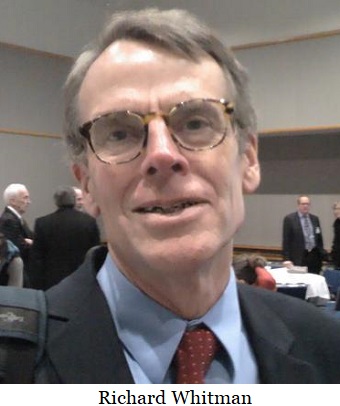



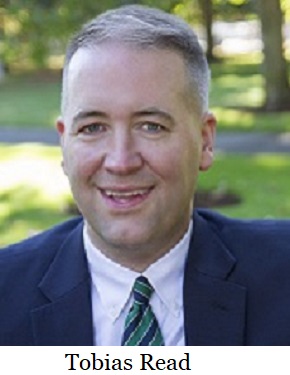




 The Portland Bureau of Transportation is building the Blumenauer Bridge to serve as a vital connection for pedestrians and people biking between two of Portland's fastest growing neighborhoods—Lloyd and the Central Eastside—and beyond.
The Portland Bureau of Transportation is building the Blumenauer Bridge to serve as a vital connection for pedestrians and people biking between two of Portland's fastest growing neighborhoods—Lloyd and the Central Eastside—and beyond.

